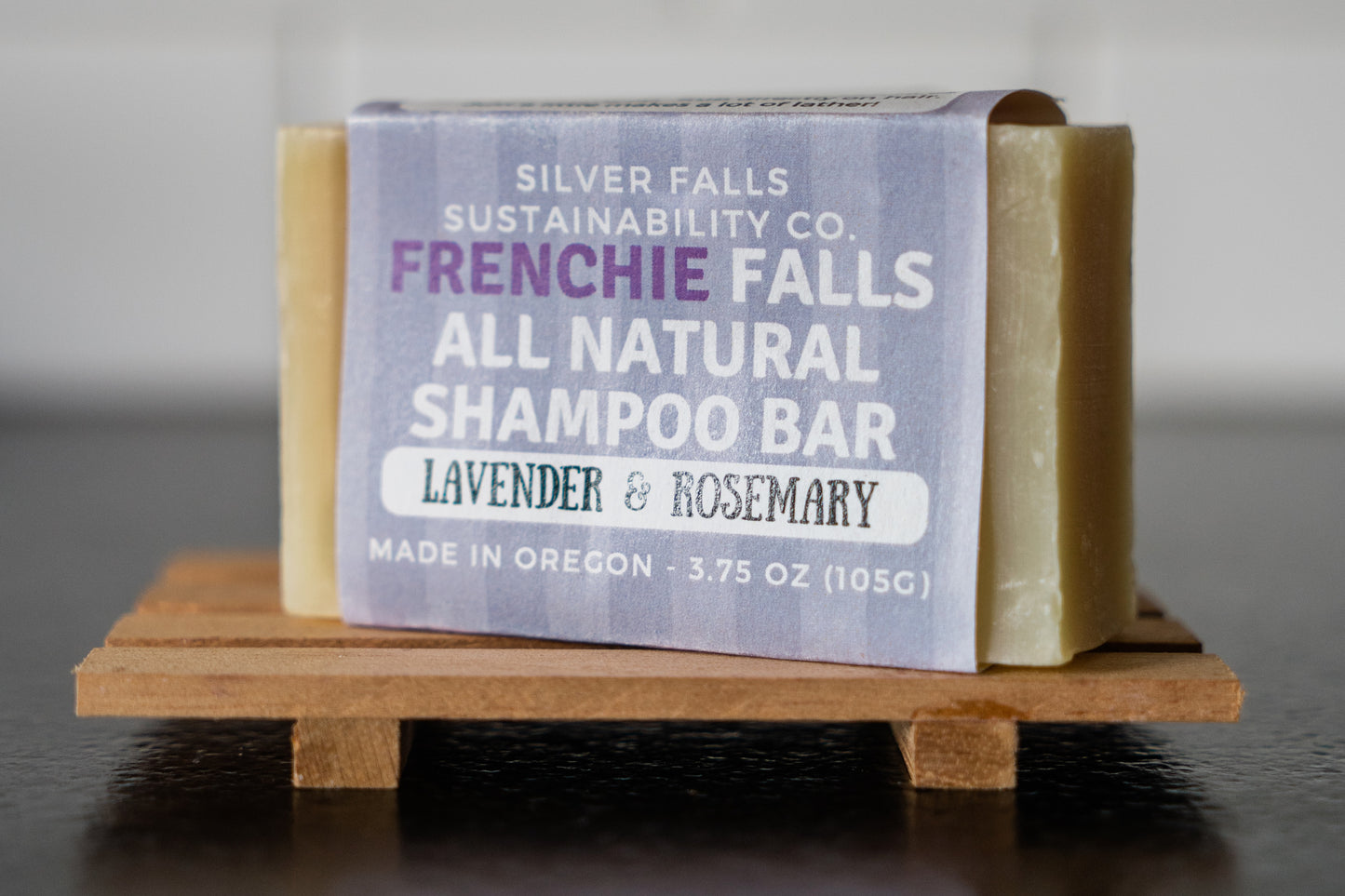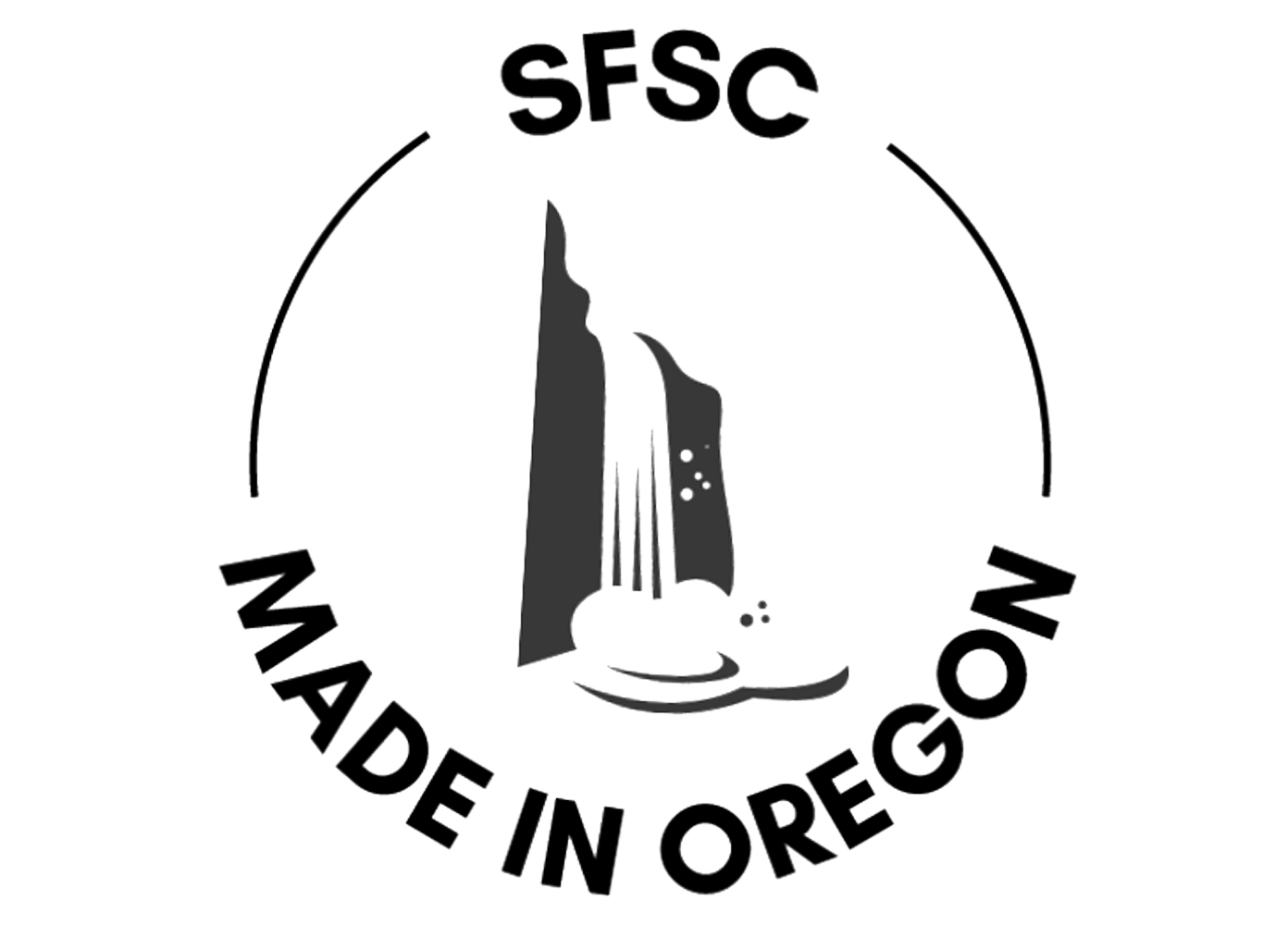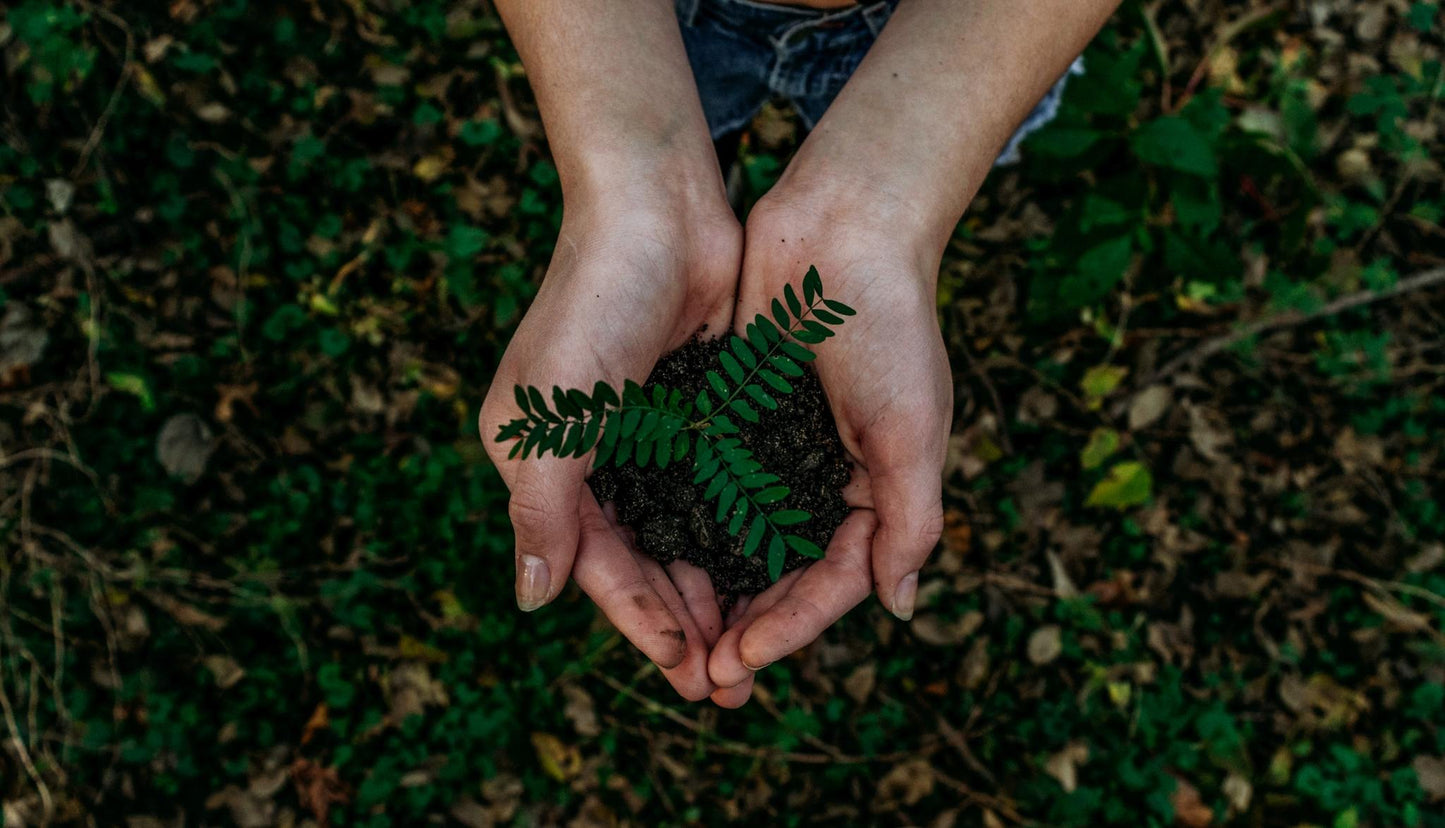
Mystified about how to use a shampoo bar? Don’t worry, you’re not alone. Using solid shampoo & conditioner for the first time can feel downright weird. But trust us, making the switch is worth it. Shampoo bars are a great way to reduce waste and nourish your hair naturally.
Whether you:
- Just got your first bar and are ready to dive in
- Tried a shampoo bar in the past and weren’t satisfied
- Want to know if a shampoo or conditioner bar will work for you
...we’ve got you covered. From your first wash to that tricky transition period, this help how-to guide will set you up for shampoo bar success.
The Problem With Conventional Shampoo and Conditioner
If you’re like most of us, the first thing that pops into your head when you hear “shampoo” is a big plastic bottle filled with liquid. But that version of shampoo is actually less than a century old.
The word “shampoo” comes from the Hindi word “champo,” meaning to knead, press, or soothe. Europeans adopted the term in the late 1700s — but liquid shampoo didn’t enter the scene until 1927. Since then, conventional hair products have slowly been packed with more and more synthetic additives.
Ingredients like sulfates, silicons, and fragrances can irritate skin or damage hair. And after you wash, those harmful chemicals enter our fresh water supplies. Shampoo & conditioner also create millions of bottles of plastic pollution every year. Luckily, there’s a better solution.
The Perks of Switching to a Natural Shampoo & Conditioner Bar
Once you figure out how to use a shampoo bar in a way that suits your routine, we think you’ll fall in love. Many of our customers say they now have the best hair of their life! Here are just a few of the benefits you can expect.
- Healthier hair with a natural shine
- Improved hair texture & less dryness
- Balanced scalp with less itching & flaking
- More time between washes
- A simpler routine
- Less clutter in the bathroom
And of course, you’ll be helping protect our environment. Shampoo & conditioner bars let you cut down on plastic waste in a big way. Many people say they can even let go of other plastic-filled hair products they used to need.
Plus, our bars keep harmful chemicals out of the water (and your body). And since we source locally and ship responsibly, you’re shrinking your carbon footprint.
Really, what’s not to love?
So what is a shampoo bar?
Shampoo bars are a natural, plastic-free way to cleanse and care for your hair. Since they’re made without all the added water, they’re more concentrated and efficient. And they come to you in waste-free, in 100% recyclable packaging.
Not all shampoo bars are created equal — some are still full of harsh chemicals. But at Silver Falls Sustainability Co., we make our bars from only the highest quality ingredients. Our bars are free from GMOs, sulfates, silicons, parabens, and phthalates. And they’re vegan & cruelty-free.
What’s in a Silver Falls Sustainability Co. shampoo bar?
We start with a base of rich, nourishing organic oils. These include coconut oil, olive oil, castor seed oil, sunflower seed oil, jojoba seed oil, and rice bran oil. Then for extra moisture, we add cocoa butter and aloe vera.
Next, we use a traditional process to transform these nourishing oils into a convenient solid bar. Our bars’ nature-inspired scents come from pure essential oils. You can explore each of our amazing bars here.
How do you make your conditioner bars?
Just like a shampoo bar, conditioner bars are a solid, zero-waste form of conditioner. They’re designed to give your hair needed moisture and a healthy shine.
Our conditioner base comes from a gentle, plant-based detangler called BTMS. Our deep conditioning bar contains shea butter, argan oil, and coconut oil for maximum moisture. And our daily conditioning bar is made with argan and coconut oil, shea butter, and pro-vitamin B5 — these powerful ingredients hydrate your hair without weighing it down.

How to Use Natural Shampoo & Conditioner Bars
If you’re used to liquid shower products, you might feel intimidated by making the switch to solid bars. Don’t worry — it’s not as tricky as it seems. We’ll walk you through the process so you’ll know how to use a shampoo bar in a way that fits your needs.
What to Expect When Transitioning to a Shampoo Bar
For most people, our shampoo bars work right away! Some people experience a transition period when changing from a conventional shampoo to a solid shampoo bar. Your experience will depend on what products you used before, your hair type, and the condition of your water.
How to Use a Shampoo & Conditioner Bar Step-By-Step
- Get your hair really wet. Use plenty of clean water — not too hot or too cold.
- Lather your shampoo bar directly onto your hair.
- Apply to your roots and massage thoroughly into your scalp so the shampoo can gently cleanse and refresh your hair.
- Rinse well to give you the best clean. Separate hair into sections to make washing long or thick hair easier.
- Apply a conditioner bar to your hair with brush-like strokes, focusing on dry areas.
- Let your conditioner soak in for a few minutes (or as long as you like).
- Rinse well and pat your hair dry.
- Continue with your normal routine of drying and styling.
- Adjust the amount of product and wash frequency as needed.
Navigating the Transition Period
Most of our customers report that our bars work great with no transition period. But for some, it could take up to a few weeks for your hair to adjust. This is because your hair is used to all the chemicals in conventional products. These products strip your hair, then coat it in synthetic ingredients to make it seem healthy.
For some people, it could take a bit of time for your scalp and hair to balance and get used to a more natural routine. If your first few washes leave you with waxy or stiff hair, don’t panic. Give it some time and experiment with different amounts of product. You can also try an apple cider vinegar rinse to clarify your hair (see the FAQ section below).
Most people find their hair adjusts quickly. For a few people, shampoo bars just don’t work as well as they’d like. But before you give up, check out these frequently asked questions to help you troubleshoot.
Frequently Asked Questions
Can I use shampoo & conditioner bars on colored hair?
The short answer: yes. The long answer: our bars aren’t specifically made for colored hair, but many of our customers use them for colored hair with great results. Since they’re made with gentle ingredients, there’s nothing in them that should strip or fade colors.
Are shampoo & conditioner bars good for curly hair?
Our bars are free from sulfates, silicones, phthalates, and parabens, so they are Curly-Girl Method friendly! Lots of our curly-haired customers say their curls love natural shampoo & conditioner bars.
Which bar is right for me?
Many people with dandruff like the tea tree oil in the Opal Creek and Wallowa Wild shampoo bars. The organic wheat bran in the Frenchie Falls bar is excellent for adding volume. Our personal favorites are Opal Creek (hers) and Wallowa Wilds (his). You can explore our shampoos here.
If you have dry hair that needs extra conditioning, or if you wash infrequently, the Deep Conditioner Bar is probably right for you. Our Daily Conditioner bar is made for people with oily, thin, or fine hair, or who wash more often.
We offer sample sizes of all our bars so you can find the perfect fit.
How much shampoo & conditioner should I use?
If you have long, thick hair, use more — and use less for short or fine hair. Experiment until you find the right amount. Using too much shampoo can make it difficult to rinse out, so increase slowly until you get hit the Goldilocks Zone.
How long do shampoo & conditioner bars last?
This depends on how long and thick your hair is and how often you wash. In general, our shampoo bars last as long as a 16 oz bottle of shampoo — or up to 60 washes. (And with none of the wasted plastic!)
Our 4.4 oz conditioner bar lasts about as long as a 20 oz bottle of conditioner, or up to 80 washes. And our 2.2 oz conditioner bar typically lasts up to 40 washes.
How should I store my bars?
The most important thing is to keep your bars away from water when you’re not using them. You can store your bars on soap dishes like our Poplar Bar Holder, a rack, or in mesh bags. Letting them dry out between uses helps them last much longer.
Are your shampoo & conditioner bars good for sensitive skin/scalp?
Since our bars are made with 100% natural, organic ingredients, they’re very gentle. They contain none of the harsh additives that usually cause irritation. We also have an unscented bar that’s perfect for extremely sensitive skin. Our conditioner bars have no added scents. If you’re worried about how your skin or scalp will respond, test out a sample size bar first.
Will a shampoo bar work for me if I have hard water?
How a shampoo bar works depends on both your water and hair type, so it’s hard to predict. Some people with very hard water who have great success with shampoo bars. Others don’t get the results they’d like.
If you have hard water, you can try lathering with distilled or filtered water — this helps keep the shampoo from grabbing the minerals in hard water. Then you should be fine to rinse with your normal shower water. You can also try using an apple cider vinegar rinse to clarify your hair.
Will your bars cause a waxy buildup after washing?
Most of our customers report soft, clean hair after washing. A few people experience a waxy texture. If you just switched to using a shampoo bar, this is probably your hair transitioning from synthetic products to natural shampoo. For most people, this stage lasts from a few washes to a few weeks.
Hard water can also make your hair feel waxy or strawlike after using a shampoo bar. Try using distilled or filtered water to lather, or use an apple cider vinegar rinse to clarify (see below).
What is an ACV rinse? Will it make me smell like vinegar?
An ACV rinse is a mix of apple cider vinegar and water. Make sure you use ACV with “the mother” for the best results. Simply dilute about a tablespoon of ACV in 8-12 oz of warm water and rinse your hair after shampooing and conditioning.
Rinsing with apple cider vinegar can remove buildup in your hair and help balance your scalp. You’ll smell the vinegar while rinsing, but the scent will disappear once it dries. (Trust us, we’ve sniffed it ourselves!)
Be careful not to rinse too often with apple cider vinegar, especially if you have dry or mature hair — it can dry your hair out if used too frequently.

Make the Switch with Confidence
We hope this guide has helped you go from “mystified” to confident in your know-how on how to use a shampoo bar. With a little time and tweaking, you can have happy, healthy hair without the harsh chemicals or plastic waste.
If you’re ready to make the switch, try our bundle of adorable sample-sized bars. This lets you test out each of our scents to see which you like best (once you have a sniff, you may decide your answer is “all of them”).
And if you have a friend who’s thinking about trying solid shampoo, share this guide with them so that they too can become Gurus of Bar Shampoo.
Click here to order your sample of shampoo & conditioner bars.




Hi Ilse, thank you so much for your support. Conscious consumers like you make our work possible — and so rewarding. Can’t wait to hear what you think of our other products once you get to test them out!
I love this newsletter you started.
I recently found out I have a local refill store that carries your products, I will buy from them to support you and them at once.
I really enjoy your hair wash bar and deodorant. Once my other products get low (lipbalm, hair conditioner) I start buying the other products you sell.
Go on with what you are doing, I like your products and environmental impact.
Ilse